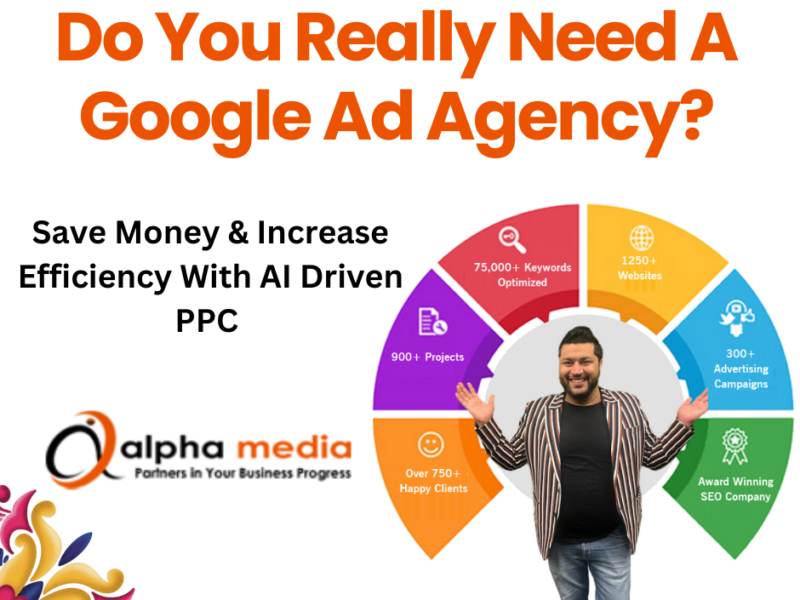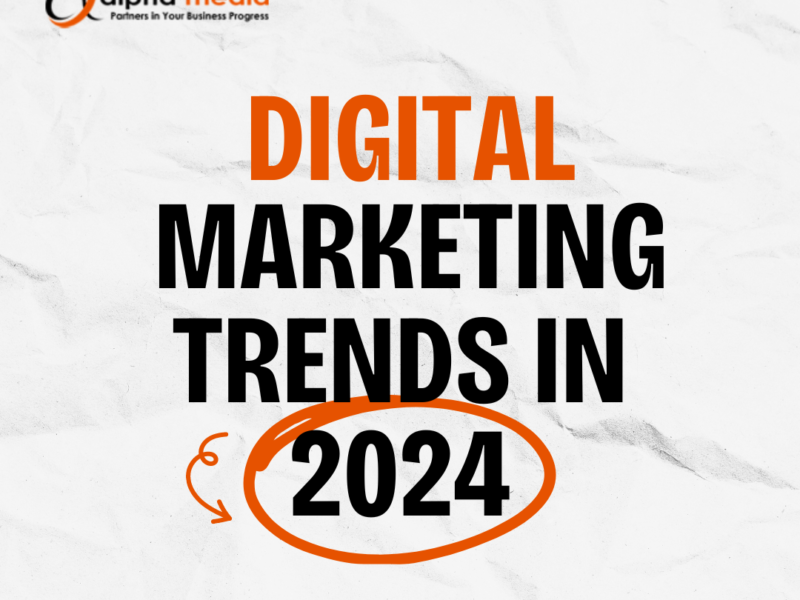Maximizing Your ROI with Pay-Per-Click in Digital Marketing
Are you looking to maximize your return on investment (ROI) in digital marketing?
If so, pay-per-click (PPC) advertising is a powerful tool you can’t afford to ignore. In today’s fast-paced and competitive online landscape, converting clicks into tangible results is the name of the game.
With PPC, you can bid for the top spots on search engine results pages (SERPs) and only pay when someone actually clicks on your ad. It’s a win-win strategy that can drive highly targeted traffic to your website, increase brand visibility, and ultimately boost conversions.
In this blog, we’ll delve into the ins and outs of PPC advertising, discussing how it works, the different platforms available, and best practices for optimizing your campaigns to achieve maximum ROI.
Whether you’re new to PPC or already have some experience, you’ll find valuable insights and actionable tips to help you take your digital marketing efforts to the next level.
Ready to turn clicks into conversions? Let’s dive in!
Understanding the importance of ROI in digital marketing
Digital marketing has become an integral part of every business’s growth strategy, and measuring the return on investment (ROI) is crucial to determine the effectiveness of your efforts.
ROI represents the financial gain or loss generated from your marketing activities, and it serves as a performance indicator for your campaigns. By understanding and optimizing your ROI, you can make data-driven decisions, allocate resources effectively, and ensure that your marketing efforts are delivering tangible results.
To maximize your ROI, it’s essential to focus on strategies that generate conversions – the ultimate goal of any digital marketing campaign. While clicks are important, they don’t necessarily translate into meaningful actions such as purchases, sign-ups, or inquiries. This is where pay-per-click advertising comes into play.
How PPC works and its role in generating conversions
Pay-per-click (PPC) advertising is a model in which advertisers pay a fee each time their ad is clicked. It’s an effective way to drive targeted traffic to your website because you only pay when someone actually engages with your ad.
PPC ads are typically displayed on search engine results pages (SERPs) or other relevant websites, and they appear alongside organic search results.
The success of PPC campaigns lies in bidding for the right keywords that align with your target audience’s search intent. By targeting specific keywords, you can ensure that your ads are shown to users who are actively searching for products or services similar to what you offer.
This highly targeted approach increases the chances of converting clicks into meaningful actions and ultimately boosts your ROI.
Choosing the right PPC platform for your business
When it comes to PPC advertising, there are several platforms available, each with its own unique features and reach. It’s crucial to choose the right platform that aligns with your business goals and target audience. The most popular PPC platforms include Google Ads, Facebook Ads, and Microsoft Advertising (formerly Bing Ads). Let’s take a closer look at each platform and its benefits.
- Google Ads: As the largest search engine, Google Ads offers unparalleled reach and visibility. It allows you to create text, display, video, and shopping ads that appear on Google search results pages, YouTube, and partner websites. With advanced targeting options and powerful analytics, Google Ads is a must-have for any PPC campaign.
- Facebook Ads: With over 2.8 billion monthly active users, Facebook Ads provides access to a massive audience base. It allows you to create highly targeted ads based on demographics, interests, and behaviours. Facebook Ads is particularly effective for businesses targeting specific demographics or running remarketing campaigns.
- Microsoft Advertising: Although it has a smaller market share compared to Google, Microsoft Advertising reaches millions of users through the Bing search engine and partner websites. It offers similar targeting options to Google Ads and can be a cost-effective alternative for reaching a different audience segment.
Keyword research and targeting for effective PPC campaigns
Keyword research is the foundation of successful PPC campaigns. It involves identifying the keywords and phrases that your target audience is using to search for products or services similar to yours. By understanding their search intent, you can create highly relevant ads that resonate with your audience and increase the chances of conversions.
To conduct keyword research, start by brainstorming a list of relevant terms and phrases that are related to your business. Then, use keyword research tools such as Google Keyword Planner, SEMrush, or Moz Keyword Explorer to expand your list and gather valuable insights such as search volume, competition, and cost per click (CPC).
Once you have a comprehensive list of keywords, it’s important to organize them into ad groups based on relevance. This allows you to create targeted ads that align with specific search queries and increase the chances of conversions. Additionally, consider using negative keywords to exclude irrelevant searches and optimize your budget allocation.
Crafting compelling ad copy and landing pages
Now that you have your keywords and ad groups set up, it’s time to craft compelling ad copy that grabs attention and entices users to click. Your ad copy should be concise, compelling, and clearly communicate the value proposition of your product or service. Here are some tips for creating effective ad copy:
- Use attention-grabbing headlines: Your headline should be catchy and relevant to the user’s search query. It should clearly state the benefit or solution you offer.
- Highlight unique selling points: Differentiate yourself from the competition by highlighting your unique selling points in the ad copy. What makes your product or service stand out?
- Include a strong call-to-action (CTA): A clear and actionable CTA encourages users to take the desired action. Use phrases like “Shop Now,” “Sign Up Today,” or “Get a Free Quote.”
Once users click on your ad, they should be directed to a well-designed and optimized landing page that aligns with the ad’s messaging. Your landing page should provide a seamless user experience and make it easy for users to take the desired action, whether it’s making a purchase, filling out a form, or contacting your business.
Optimizing your PPC campaigns for maximum ROI
To achieve maximum ROI with PPC advertising, continuous optimization is key. Here are some best practices to help you optimize your campaigns and drive better results:
- Monitor and adjust bids: Regularly monitor your campaign performance and adjust your bids based on the keywords’ performance. Increase bids for high-performing keywords and decrease bids for underperforming ones.
- Test different ad variations: A/B testing your ad variations allows you to identify which elements resonate best with your audience. Test different headlines, descriptions, and calls-to-action to find the winning combination.
- Optimize landing pages: Continuously test and optimize your landing pages to improve conversion rates. Experiment with different layouts, colors, and messaging to find what works best for your audience.
- Implement remarketing campaigns: Remarketing allows you to target users who have previously visited your website or interacted with your ads. By staying top-of-mind, you can increase the chances of conversion.
Tracking and Analyzing PPC Campaign Performance
To measure the success of your PPC campaigns and ensure that you’re maximizing your ROI, it’s crucial to track and analyze the right metrics. Here are some key performance indicators (KPIs) to monitor:
- Click-through rate (CTR): CTR measures the percentage of users who clicked on your ad after seeing it. A high CTR indicates that your ads are relevant and compelling.
- Conversion rate: Conversion rate measures the percentage of users who took the desired action on your website, such as making a purchase or filling out a form. A high conversion rate indicates that your ads and landing pages are effective.
- Cost per conversion (CPC): CPC measures the average cost you pay for each conversion. It helps you understand the efficiency of your campaigns and optimize your budget allocation.
- Return on ad spend (ROAS): ROAS measures the revenue generated for every dollar spent on advertising. It helps you determine the profitability of your campaigns and make informed decisions.
By regularly tracking these metrics, you can identify areas for improvement, make data-driven decisions, and optimize your campaigns for maximum ROI.
Tips for improving ROI in PPC advertising
To further improve your ROI in PPC advertising, consider the following tips:
- Use ad extensions: Ad extensions provide additional information and improve the visibility of your ads. They can include additional links, phone numbers, or location information, depending on your business type.
- Leverage audience targeting: Take advantage of audience targeting options to reach specific demographics or retarget users who have previously engaged with your ads or website.
- Utilize ad scheduling: Ad scheduling allows you to specify the days and times when your ads are shown. By targeting your audience at the right time, you can increase the chances of conversions.
- Invest in landing page optimization: Continuously optimize your landing pages to improve the user experience and increase conversion rates. Test different elements such as headlines, images, forms, and CTAs to find what works best.
- Stay up-to-date with industry trends: The digital marketing landscape is constantly evolving. Stay informed about the latest trends, updates, and best practices to stay ahead of the competition and drive better results.
Conclusion: Leveraging PPC to drive conversions and boost your business
Pay-per-click (PPC) advertising is a powerful tool for maximizing your return on investment (ROI) in digital marketing. By bidding for top spots on search engine results pages (SERPs) and only paying when someone clicks on your ad, you can drive highly targeted traffic to your website, increase brand visibility, and ultimately boost conversions.
With the right strategies and optimization techniques, you can turn clicks into tangible results and take your digital marketing efforts to the next level. Start implementing PPC advertising today and watch your ROI soar!
In conclusion, PPC advertising offers a unique opportunity to reach and engage with your target audience in a cost-effective way. By understanding the importance of ROI, choosing the right PPC platform, conducting thorough keyword research, crafting compelling ad copy, and continuously optimizing your campaigns, you can maximize your return on investment and drive meaningful conversions.
Don’t miss out on the potential of PPC advertising – get started today and unlock the full potential of your digital marketing efforts.



